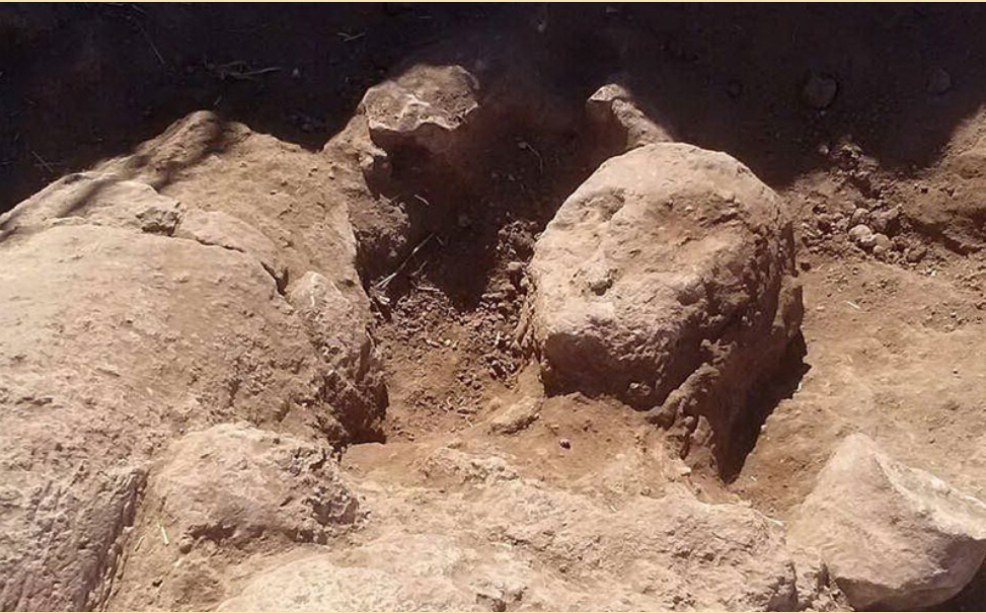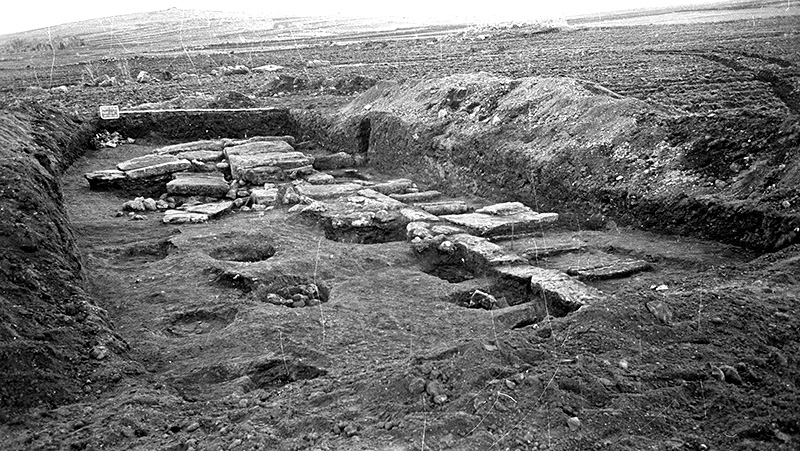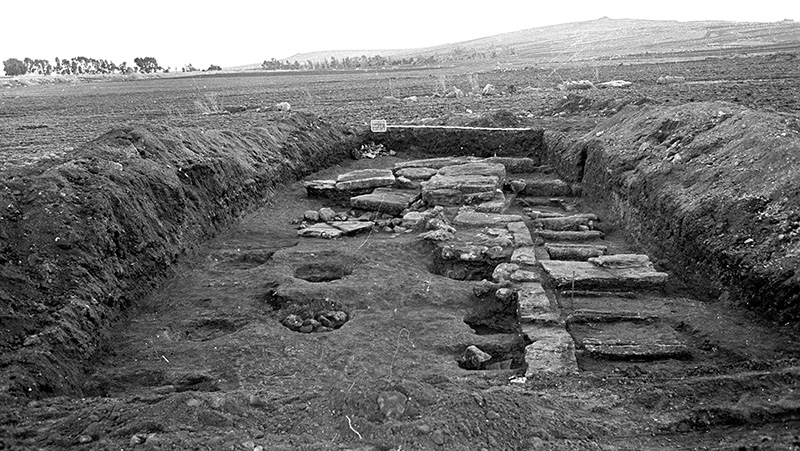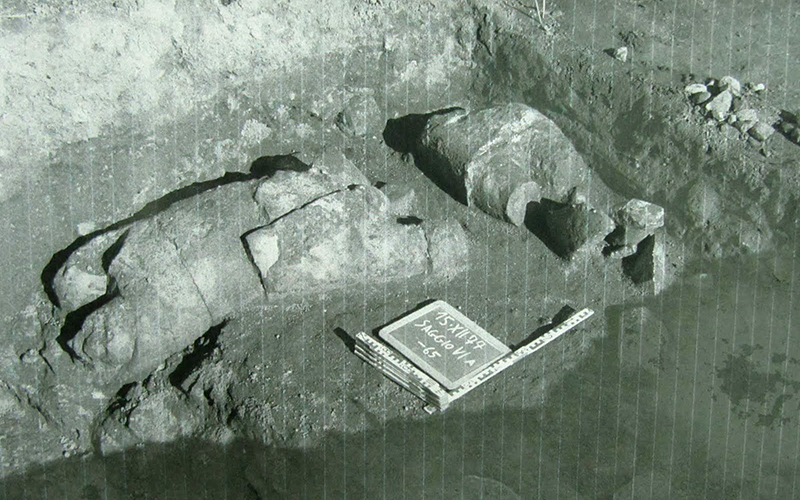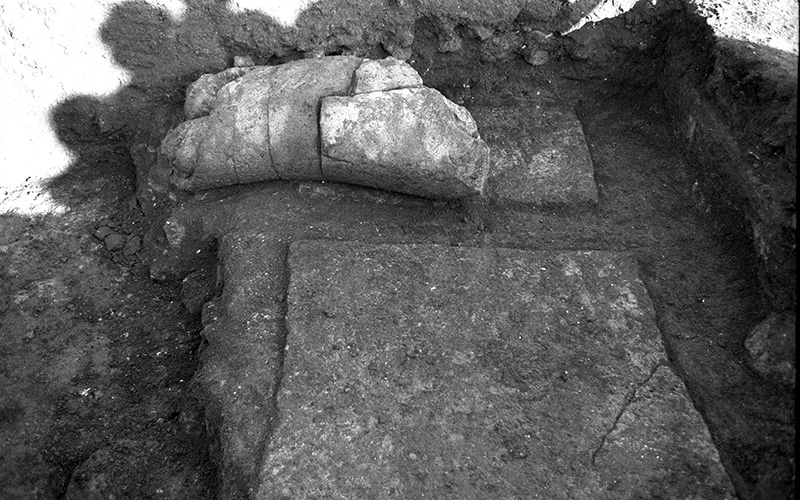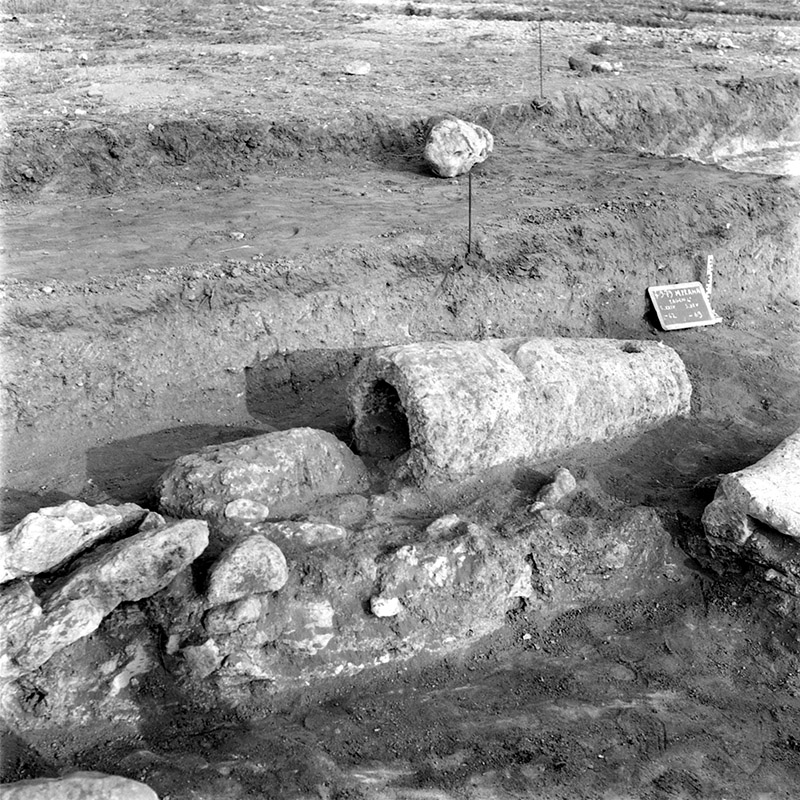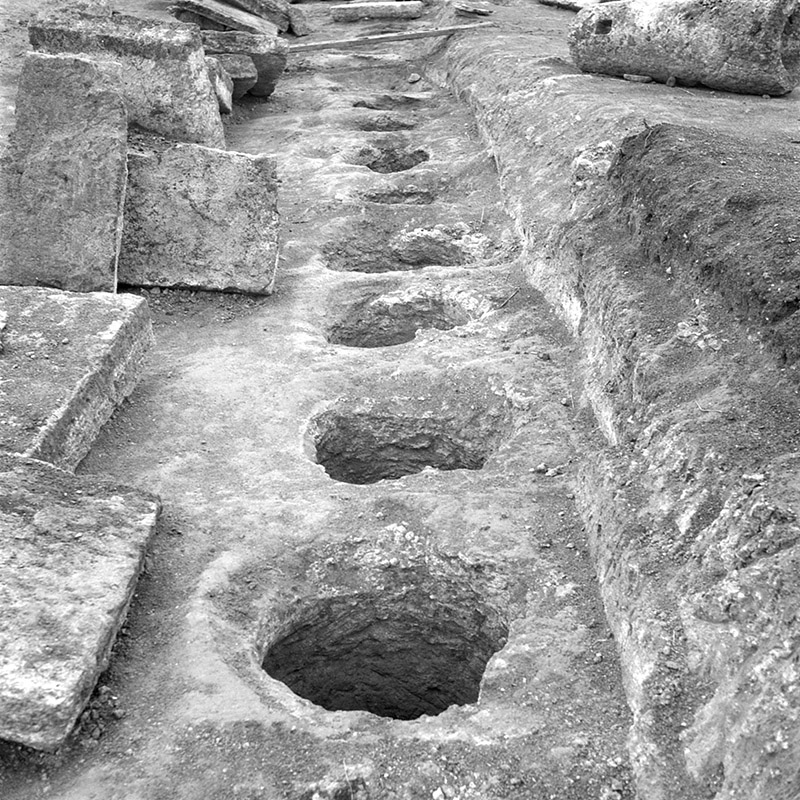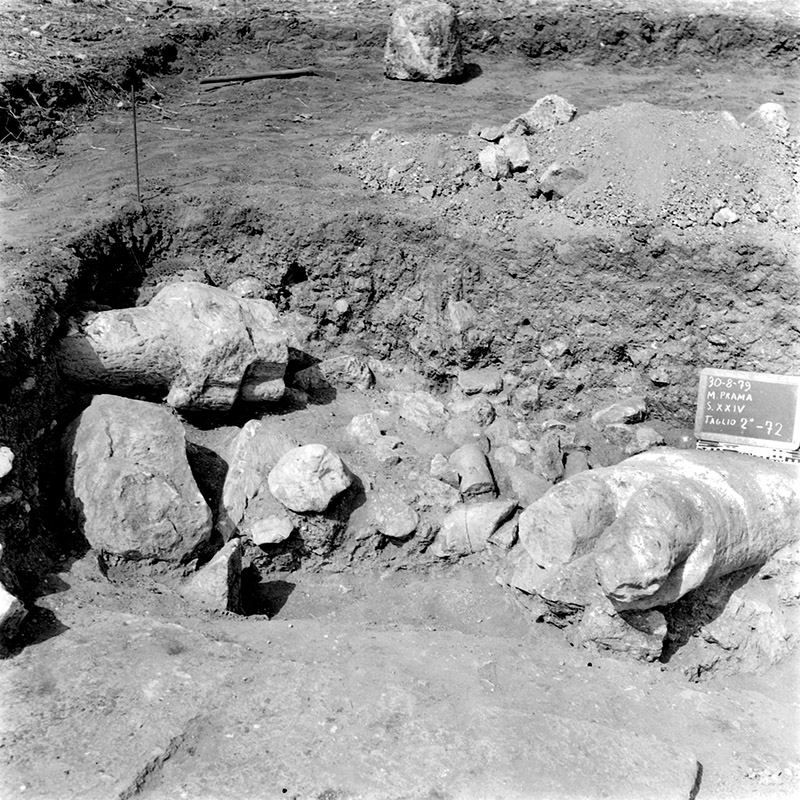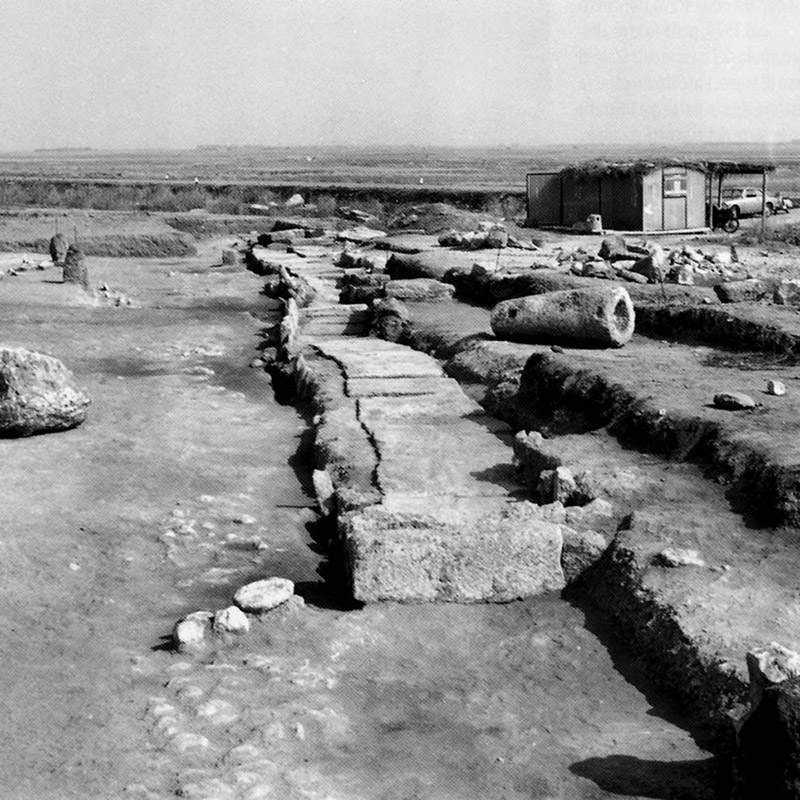The first excavation campaign
The area of Mont’e Prama is a vaguely elliptical-shaped hill made of limestone. Its name reflects its uncultivated state, with large presence of dwarf palms, probably due to the abandonment of the fields in medieval and post-medieval times.
In the 17th century, Capuchin monk Salvatore Vidal was the first to write about the existence of an ancient centre at Mont’e Prama, one of the fourty (oppida) (fortified cities) in the Sinis area.
In 1929, scholar Antonio Taramelli, in his Edizione archeologica della carta d’Italia al 100.000 – Foglio 216 (Archaeological map of Italy at a scale of 1:100,000 – Sheet 216), provided information on ancient settlements in the area: the nuraghes of Cannevadosu and Sa Tiria and a necropolis dating from Greek or Roman times.
The archaeological area was identified in 1972 by Silvano Ibba, a student of Giovanni Lilliu, in his dissertation on the archaeological findings in the central-southern area of the Sinis.
In the 1970s two farmers discovered the first sculptures while ploughing.
The first documented findings date from the spring of 1974. The Cagliari Architecture Superintendency organise a first brief excavation campaign in December 1975, directed by Alessandro Bedini.
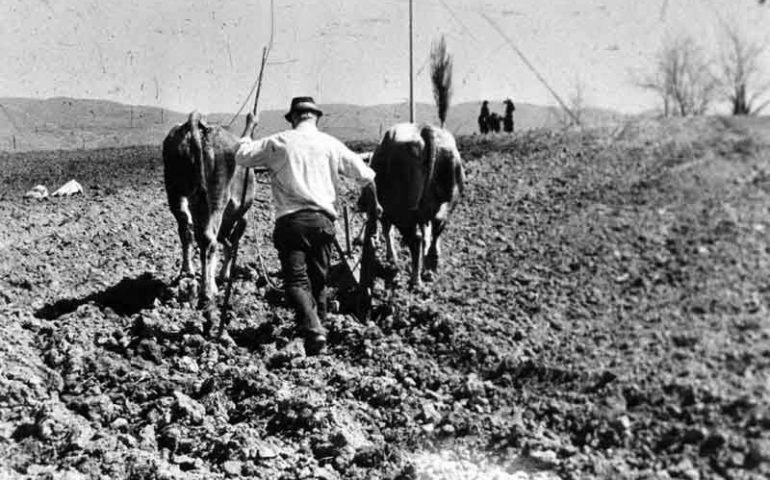
The following years saw other investigations.
In January 1977, an exploratory dig lasting just one day was directed by Giovanni Lilliu and Enrico Atzeni and in December of the same year, more exploratory digs were performed by Maria Luisa Ferrarese Ceruti and Carlo Tronchetti.
In 1979, the first systematic excavation campaign was directed again by Carlo Tronchetti.
These early archaeological investigations reveal to us a necropolis in use for several centuries, showing the signs of several different development periods.




